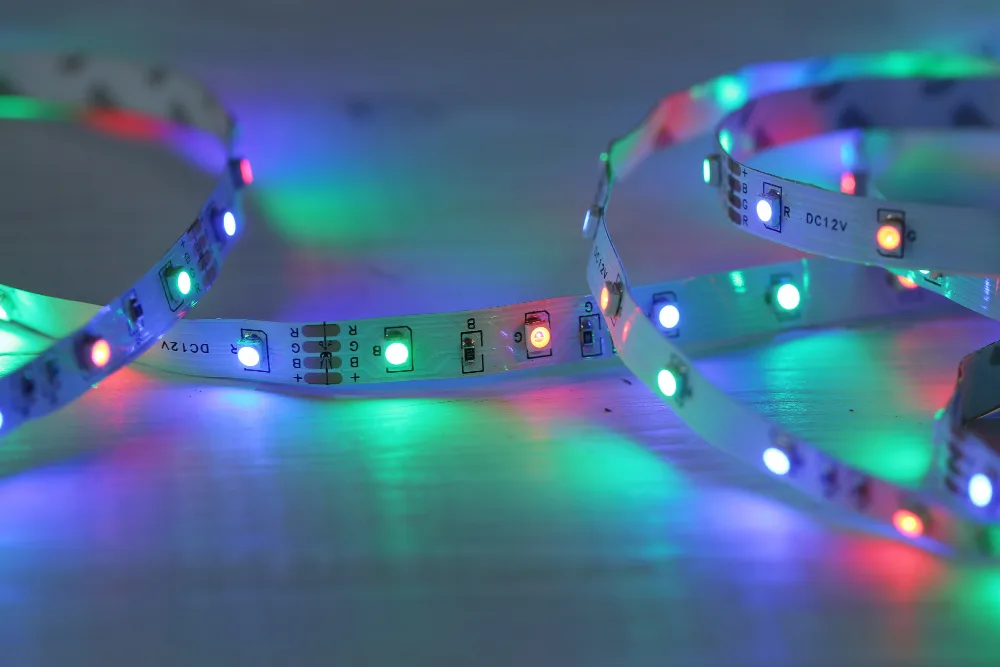Introduction
In our daily lives, lighting has a significant impact on a number of functional and psychological characteristics of people. It improves mood, productivity, safety, and visibility. Our daily activity is influenced by natural light, which has an effect on our sleep habits and general wellness. Our active hours are increased with artificial illumination, which enables activities to go on after dark. With the development of technology, lighting options such as Light Emitting Diodes (LEDs) have become innovative choices that change how we illuminate our surroundings.
Table of Contents
Understanding Light Emitting Diodes (LEDs)
LEDs are semiconductor devices that emit light when an electric current passes through them. Unlike traditional incandescent bulbs that produce light through heating a filament, LEDs produce light through a process called electroluminescence. This phenomenon involves the movement of electrons within the semiconductor material, resulting in the emission of photons (light particles). LEDs come in various colors and can be combined to create dynamic lighting effects.
Importance of LEDs in Energy Efficiency
- Efficient Energy Conversion: LEDs are highly energy-efficient as they convert a significant portion of energy into light rather than heat. In contrast, traditional incandescent bulbs waste a large amount of energy as heat.
- Lifespan: Compared to traditional bulbs, LEDs have a remarkable lifespan of tens of thousands of hours. This reduces the frequency of replacements, saving both resources and costs.
- Lower Power Consumption: LEDs use far less energy to produce the same quantity of light, which results in decreased energy costs and carbon emissions.
Adaptability of LEDs
- Directionality: LEDs emit light in specific directions, allowing for focus lighting . This feature reduce light wastage and increase the effectiveness of lighting systems.
- Color Variety: LEDs can emit a wide range of colors without the need for filters. This adaptability is used in various applications such as mood lighting, displays, and decorative lighting.
- Dimmability: Many LED lighting systems are easily dimmable, enabling users to adjust the light intensity according to their preferences and needs. This is useful for creating ambiance and saving energy.
- Rapid Switching and Instant Light: LEDs reach full brightness instantly and can be rapidly switched on and off without affecting their lifespan. This makes them ideal for applications where frequent switching is required.
Evolution of Light emitting diodes(LED)
Early Developments in LED Technology in the 1960s: Back in the 1960s, people started playing around with something called Light Emitting Diodes, or LEDs for short. They were tiny lights made from special materials called semiconductors. These lights were first used as little indicators in electronic devices to show if something was on or off. The focus was mostly on making lights that we can’t see, like ones that emit infrared light.
Role of Nick Holonyak Jr. in Creating the First Visible-Spectrum LED: Then, there’s this person named Nick Holonyak Jr. who made a huge contribution. In 1962, he did something amazing. He created the very first LED that could give off light we can actually see, like red light. He used a special mix of materials to make this LED. This was a big deal because before that, LEDs could only make light that our eyes couldn’t detect.
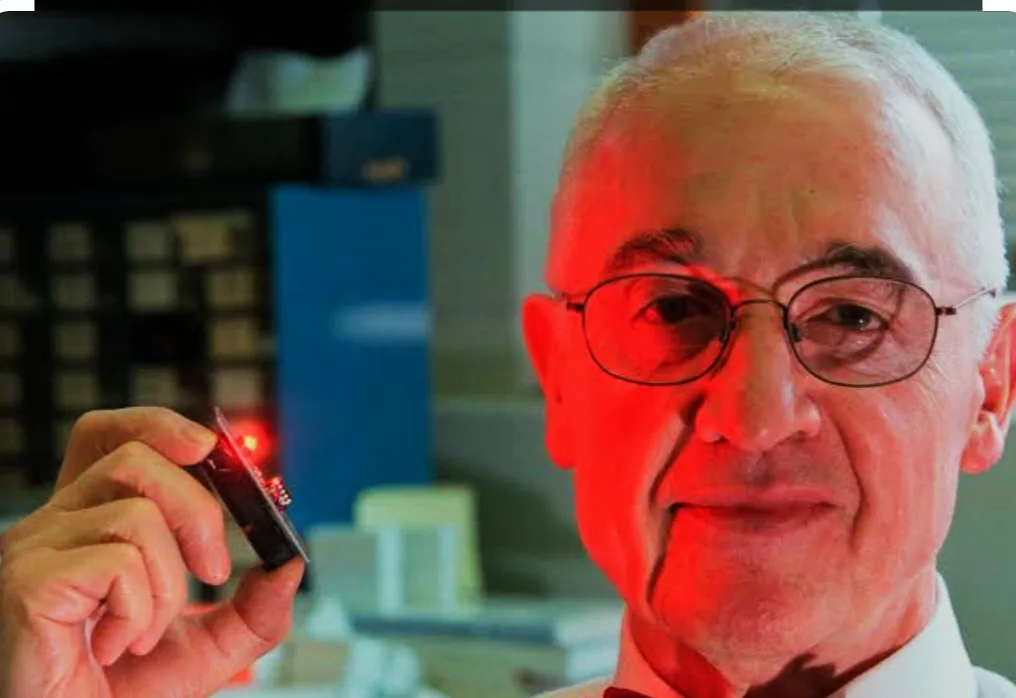
Transition from Initial Red LEDs to Modern RGB Color Possibilities: After red LEDs came along, researchers and scientists wanted to make LEDs that could shine in different colors. But making blue LEDs was a bit tough.
Finally, in 1994, Shuji Nakamura succeeded in creating the first high-brightness blue LED using gallium nitride.The development of blue LEDs was a first step in creating white light by combining blue LEDs with red and green LEDs, or using phosphor coatings. This led to the creation of energy-efficient white LED lighting, which has revolutionized the lighting industry by offering longer lifespans and lower energy consumption compared to traditional incandescent bulbs
In 2014, Isamu Akasaki, Hiroshi Amano, and Shuji Nakamura were jointly awarded the Nobel Prize in Physics for their amazing work in the development of blue LEDs.Their work not only contributed to energy-efficient lighting but also played a major role in the creation of high-definition flat-panel displays, smartphone screens, and various other.
The Science Behind the Glow: How LED Work
Light Emitting Diodes (LEDs) are fascinating devices that create light using a process called electroluminescence
Electroluminescence Process and Recombination
LEDs, or Light Emitting Diodes, are semiconductor devices that emit light when an electric current passes through them. This phenomenon is known as electroluminescence. Electroluminescence occurs due to the recombination of charge carriers (electrons and holes) within a semiconductor material.
In a semiconductor material, there are two types of charge carriers: electrons with a negative charge and holes with a positive charge. When a forward voltage is applied across the LED, electrons from the n-type (negative) region move towards the p-type (positive) region, and holes from the p-type region move towards the n-type region. At the junction where these two regions meet, called the p-n junction, electrons and holes recombine. This process is called recombination.
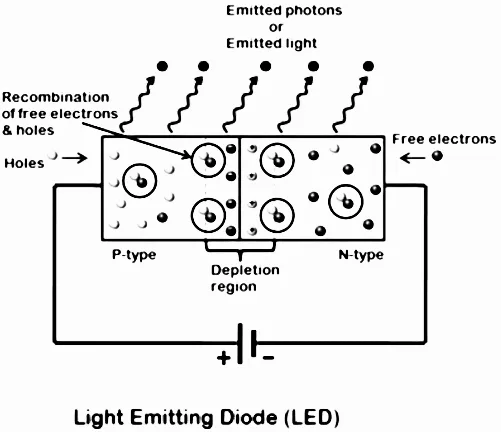
When electrons and holes recombine at the p-n junction, the excess energy is released in the form of photons (light). The structure of the semiconductor material and the characteristics of the p-n junction determine the energy levels and the wavelength (color) of the emitted light.
Semiconductor Materials and Their Role
The choice of semiconductor materials is important in LED production, as it determines the wavelength (color) of the emitted light. Common semiconductor materials used in LED include Gallium Arsenide (GaAs), Gallium Phosphide (GaP), and Gallium Nitride (GaN). These materials have varying energy band gaps, which influence the color of light emitted during recombination.
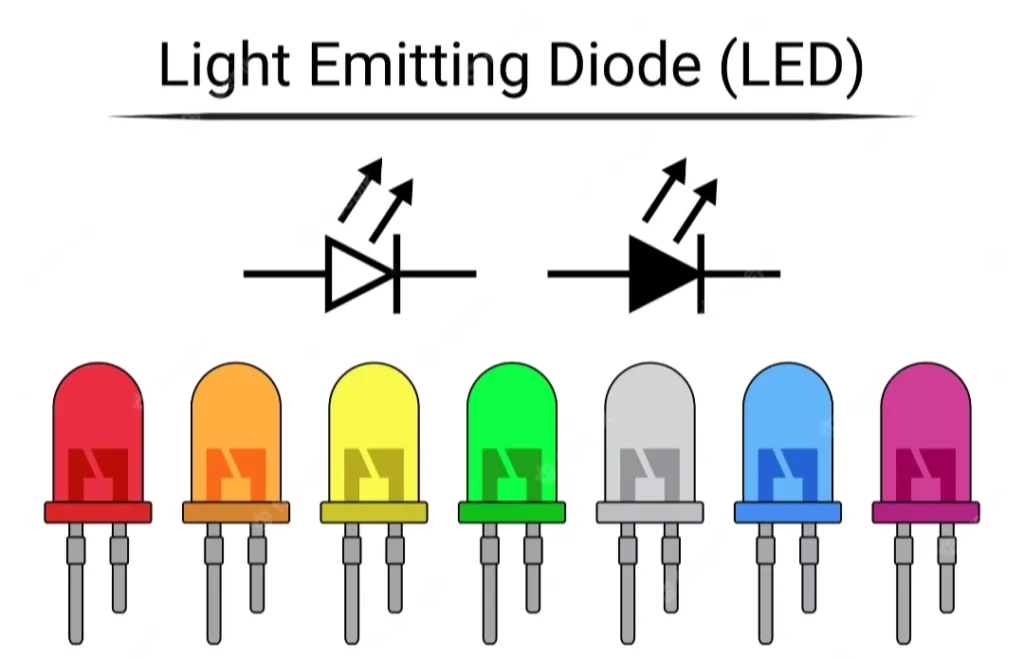
Creating Different Colors of Light
Different semiconductor materials produce various colors of light due to their distinct energy band gaps. The energy band gap is the energy difference between the valence band (where electrons reside) and the conduction band (where electrons can move freely). When an electron falls from the conduction band to the valence band during recombination, it releases energy in the form of a photon with a specific wavelength.
For instance, Gallium Arsenide emits infrared light, Gallium Phosphide emits red or green light, and Gallium Nitride emits blue or ultraviolet light. By carefully selecting and engineering the semiconductor materials, it’s possible to create LED that emit a wide range of colors, from the visible spectrum to beyond.
Advantages of LED over Traditional Lighting Technologies
Comparison with Incandescent Bulbs
- Efficiency: LEDs are significantly more efficient than incandescent bulbs. Incandescent bulbs convert only about 10% of the energy they consume into visible light, while the rest is wasted as heat. LED, on the other hand, convert a much higher percentage of energy into light, making them much more energy-efficient.
- Heat Generation: Incandescent bulbs generate a substantial amount of heat, which can contribute to discomfort and energy wastage, especially in confined spaces. LED generate very little heat, making them safer to handle and more suitable for use in enclosed fixtures.
- Lifespan: LED has a much longer lifespan compared to incandescent bulbs. An incandescent bulb typically lasts around 1,000 hours, while an LED can last tens of thousands of hours. This longevity reduces the need for frequent replacements, saving both money and resources.
Comparison with Fluorescent Lights:
- Energy Consumption: LED consume less energy than fluorescent lights to produce the same amount of light. Fluorescent lights use a significant portion of their energy to generate heat, whereas LED generate minimal heat, focusing their energy on producing light.
- Mercury Content: Fluorescent lights contain a small amount of mercury, a hazardous substance. In case of breakage, mercury vapor can be released, posing health and environmental risks. LEDs do not contain mercury, making them safer to handle and dispose.
Environmental Benefits of LEDs
- Reduced Carbon Footprint: The energy efficiency of LEDs translates into reduced electricity consumption. This leads to a decreased demand for electricity production, which often involves burning fossil fuels and contributing to greenhouse gas emissions. LEDs help mitigate climate change by lowering the carbon footprint associated with lighting.
- Reduced Waste: Longer LED lifespans mean fewer bulbs need to be manufactured, transported, and disposed of over time. This reduction in waste generation contributes to less strain on landfills and recycling systems, thereby lowering the environmental impact of lighting.
LED Applications Across Industries
Residential and Commercial Lighting
LEDs have transformed the lighting landscape in both residential and commercial spaces. They are used in various forms, such as:
- Bulbs: LED light bulbs are energy-efficient alternatives to traditional incandescent bulbs. They come in various color temperatures, allowing users to customize the lighting ambiance.
- Downlights: LED downlights provide focused and directional lighting, commonly used in retail spaces, offices, and homes for task lighting.
- Architectural Accents: LEDs are employed to create visually appealing effects, such as highlighting architectural features, wall washing, and cove lighting, enhancing the atmosphere of buildings.

Outdoor Lighting
LEDs have revolutionized outdoor lighting with their energy efficiency and versatility:
- Streetlights: LED streetlights offer bright and uniform illumination while consuming less energy, reducing operational costs and enhancing visibility and safety on roads.
- Floodlights: LED floodlights are used for large area illumination, such as sports stadiums, outdoor events, and security lighting.
- Landscape Illumination: LEDs are used to accentuate landscapes, gardens, and pathways, creating visually appealing outdoor environments.

Automotive Lighting
LEDs have become integral to modern vehicle lighting systems due to their efficiency and design flexibility:
- Headlights: LED headlights provide brighter and more focused illumination, improving night-time visibility for drivers.
- Brake Lights: LEDs offer quick response times, making them ideal for brake lights that need to convey immediate signals to other drivers.
- Interior Lighting: LEDs are used for interior ambient lighting, instrument panel illumination, and accent lighting, enhancing the overall driving experience.
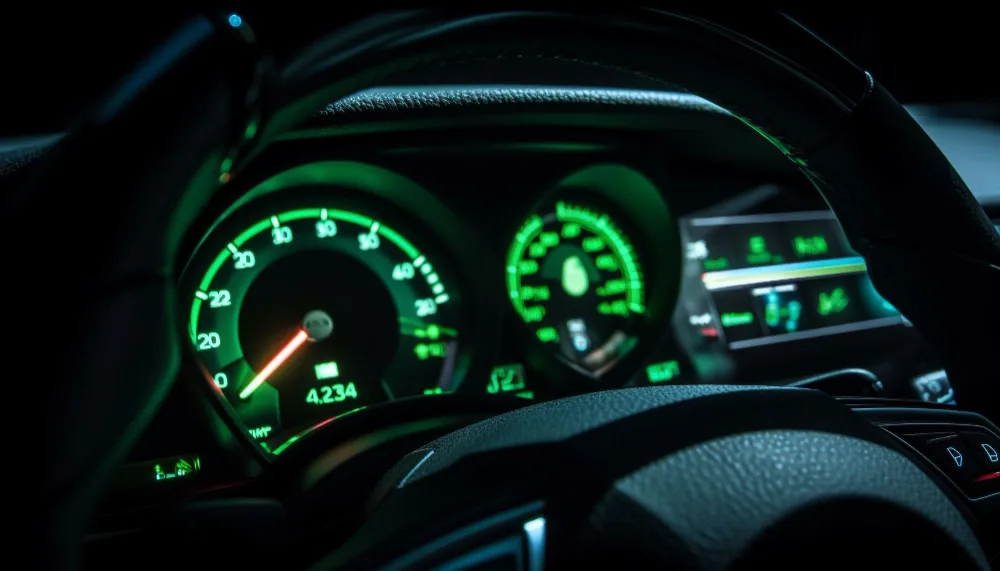
Entertainment and Displays
LED technology has transformed the world of entertainment and displays:
- LED Screens: Large LED screens are used for concerts, sporting events, and public displays, offering high-resolution visuals and vibrant colors.
- Televisions: LED-backlit TVs provide better contrast, energy efficiency, and thinner designs compared to traditional LCD TVs.
- Digital Billboards: LED enable dynamic and eye-catching advertisements on digital billboards, allowing for real-time updates and engaging visuals.
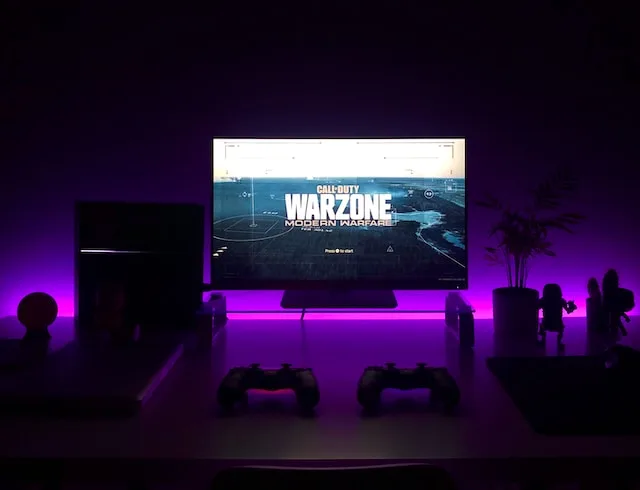
Innovations and Trends in LED Technology
Miniaturization and Flexible LED Technologies
Advancements in LED technology have led to miniaturization and flexibility, revolutionizing lighting solutions. These developments include:
- MicroLEDs: These are incredibly small LEDs, often less than 100 micrometers in size. They offer high brightness, vivid colors, and individual pixel control, making them ideal for high-resolution displays and compact lighting designs.
- Flexible LED Arrays: LED integrated onto flexible substrates enable the creation of bendable and adaptable lighting systems. Such flexibility allows for innovative applications in curved surfaces, wearables, and architectural designs.
Smart Lighting Systems: IoT Integration and Control
The convergence of LED technology with the Internet of Things (IoT) has ushered in a new era of intelligent lighting:
- Connected Lighting: LEDs are equipped with sensors and wireless connectivity, allowing them to be controlled remotely through smartphones, tablets, or voice assistants. This facilitates personalized lighting experiences and energy-efficient management.
- Data-Driven Insights: Smart LED gather data on user preferences, occupancy patterns, and ambient conditions. Analysis of this data provides valuable insights for optimizing energy consumption and tailoring lighting to specific needs.
Human-Centric Lighting: Impact on Circadian Rhythms and Health
Understanding the impact of lighting on human well-being has led to the development of human-centric lighting solutions:
- Tunable White Lighting: LED with adjustable color temperature mimic natural sunlight’s variations throughout the day. This helps regulate circadian rhythms(Circadian rhythms are refer to change occurs in our body during 24 hour cycle. These changes are physical, mental, and behavioral change),it improve sleep patterns, and enhance overall mood.
- Biological Benefits: Human-centric lighting positively influences concentration, productivity, and even medical recovery. By aligning lighting with the body’s natural rhythms, these systems contribute to better health and enhanced quality of life.
Quantum Dot LEDs (QLEDs)
Quantum dot technology has brought about significant improvements in LED displays and lighting:
- Enhanced Color Range: QLEDs can produce a wider spectrum of colors, resulting in more accurate and vibrant displays and lighting environments.
- Energy Efficiency: Ongoing research aims to make QLEDs more energy-efficient by optimizing the quantum dot materials and their integration into LED structures.
- Durability and Longevity: Advancements in quantum dot materials contribute to longer-lasting QLEDs that maintain color accuracy over time.
Challenges and Future vision
- Overcoming Initial High Costs: Cost Reduction Strategies: The initial costs of implementing LED technologies, especially for large-scale applications like street lighting or commercial installations, have been a challenge. However, the industry has made significant progress in cost reduction over the years through economies of scale, improved manufacturing processes, and advancements in materials. Continued research into efficient manufacturing techniques, optimization of production processes, and innovation in materials will further contribute to lowering the overall cost of LED products.
- Addressing Concerns about Blue Light Emission and Health Effects: Blue light emitted by LED has raised concerns about its potential impact on human health, particularly its potential to disrupt sleep patterns and cause eye strain. To address this, manufacturers are developing LED products with better color temperature controls, allowing for warmer and more natural lighting in the evening to reduce blue light exposure. Additionally, research is ongoing to better understand the potential health effects of blue light and to establish guidelines for safe usage.
- Integration of LEDs into Smart Cities and Sustainable Urban Planning: The integration of LED lighting into smart city initiatives presents an opportunity to enhance urban living through energy efficiency, improved safety, and enhanced services. LED can be integrated with sensors and data analytics to optimize lighting based on real-time conditions such as traffic, weather, and occupancy. This integration not only reduces energy consumption but also contributes to sustainable urban planning by creating well-lit and safer environments while minimizing light pollution.
- Exploring the Potential of OLEDs and Other Emerging Technologies: Organic Light-Emitting Diodes (OLEDs) are an emerging technology that offers several advantages, including flexible and thin form factors, better color accuracy, and the potential for transparency. OLEDs have found applications in displays and even lighting fixtures. Continued research and development are likely to lead to further improvements in efficiency, durability, and cost-effectiveness for OLED technology. Additionally, other emerging technologies such as MicroLEDs and Laser Diodes are also being explored for their potential to revolutionize lighting and display industries.
Practical Considerations and Consumer Tips
Factors to Consider When Choosing LED Products: Brightness, Color Temperature, and CRI
When selecting LED products, it’s important to consider the following factors:
- Brightness (Lumens): Lumens indicate the amount of light emitted by the bulb. Higher lumens mean brighter light. Choose a lumen level that suits the intended application, whether it’s ambient lighting or task lighting.
- Color Temperature (Kelvin): Color temperature determines the warmth or coolness of the light. Lower Kelvin values (e.g., 2700K) provide warm, cozy lighting, while higher values (e.g., 5000K) offer cooler, daylight-like illumination.
- Color Rendering Index (CRI): CRI measures how accurately a light source reveals colors compared to natural light. Higher CRI values indicate better color accuracy. Look for LEDs with a CRI of 80 or higher for accurate color representation.
Understanding Lumens and Watts: Shifting from Wattage-Based to Brightness-Based Decision Making
Traditionally, consumers used wattage to determine the brightness of incandescent bulbs. With LEDs being more energy-efficient, the relationship between watts and brightness has changed. When choosing LEDs, focus on lumens instead of watts. For instance, a 10W LED bulb can provide the same brightness as a 60W incandescent bulb, but it will consume less energy.
Tips for Proper Installation, Maintenance, and Disposal of LEDs
Here are some tips to ensure optimal use and environmental responsibility:
- Installation: Follow manufacturer instructions for proper installation. Ensure the LED is compatible with the fixture and voltage. Avoid direct contact with LED chips during installation.
- Maintenance: LEDs have a longer lifespan, but regular cleaning can improve performance. Dust and dirt can reduce light output. Clean with a soft, dry cloth to avoid damaging the LED’s surface.
- Disposal: LEDs contain electronic components. Many communities have recycling programs for electronic waste. Check local regulations for proper disposal methods. LEDs do not contain hazardous materials like mercury, but recycling helps recover valuable materials.
Conclusion
The journey of Light Emitting Diodes (LEDs) has been nothing short of transformative, evolving from their modest origins to becoming a true game-changing lighting solution. From their initial introduction as indicator lights to their present-day dominance in various applications, LEDs have revolutionized the way we illuminate our world.
In essence, LEDs have not only illuminated our spaces but have also illuminated the path toward a more efficient, sustainable, and innovative future. Their journey serves as a testament to the power of innovation, reminding us of the profound impact that a single technology can have on our lives, our environment, and the possibilities that lie ahead.
References
- “LED Lighting in the U.S.” – U.S. Department of Energy, Energy.gov.

